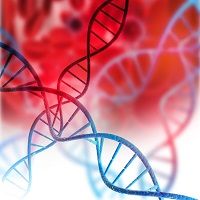Chronic Pain – A Family Affair?
Parents pass down hair color, eye color, risk of health problems, and many other traits to their children – but what about a condition without any real biomarker or physical appearance?

Parents pass down hair color, eye color, risk of health problems, and many other traits to their children — but what about a condition without any real biomarker or physical appearance? That’s what Amanda Stone, MS, of Vanderbilt University, and Anna Wilson, PhD, of Oregon Health & Science University, aimed to find out about chronic pain.
It’s known that kids with parents who have chronic pain are more likely to also develop the condition. They also have an increased risk of experiencing the adverse mental and physical issues that commonly accompany chronic pain. So Stone and Wilson took this understanding to create an “integrative conceptual model” that could explain the family connection.
- Related: Having No Friends Is Painful, Literally
The doctors broke the model down into five “plausible mechanisms” that could describe the parent-to-child effect:
1. Genetics: Previous research has determined that genetics could explain chronic pain in about half of adult patients.
2. Early Neurobiological Development: A child’s nervous system could be impacted during development, such as high stress during and after pregnancy.
3. Pain-Specific Social Learning: Kids may learn pain behavior and catastrophizing could play a role.
4. General Parenting and Health Habits: A parent’s lack of warmth, physical activity, and other health habits could affect the child.
5. Exposure to Stressful Environment: Certain environments can contribute to the stress component of chronic pain.
“Such a framework highlights chronic pain as inherently familial and intergenerational, opening up avenues for new models of intervention and prevention that can be family-centered and include at-risk children,” the authors wrote in the journal PAIN.
Stone and Wilson said that these mechanisms likely interact over time to impact the development of chronic pain in kids who have a parent with the condition. The hope is that this framework helps to create preventive and treatment approaches for a health problem that affects 100 million Americans.
Also on MD Magazine >>> Long-Acting Opioids Are the Deadliest of Chronic Pain Treatment Options